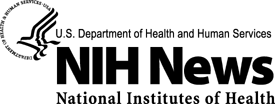|
Public Access Defibrillation by Trained Community Volunteers Increases Survival for Victims of Cardiac Arrest
Orlando, FL — The number of survivors of sudden cardiac
arrest markedly increased when the victims were helped by community
volunteers trained to perform not only CPR but also to use an automated
external defibrillator (AED), a device that shocks an ineffectively
beating heart back into normal rhythm, according to the results
of a large multi-center study funded by the National Heart, Lung,
and Blood Institute (NHLBI) in collaboration with the American Heart
Association.
Over an average 21.5 months, there were 29 cardiac arrest survivors to hospital discharge in the group assigned to CPR plus AED compared to 15 survivors in the group assigned to CPR only. The results of the Public Access Defibrillation (PAD) Trial are being presented today in the Late Breaking Clinical Trials section of the American Heart Association's Scientific Sessions 2003.
"Sudden cardiac arrest is a top killer of Americans. This important study shows that lives can be saved by training community volunteers to use external defibrillators," said Acting NHLBI Director Barbara Alving, M.D.
There are over 460,000 deaths from "out-of-hospital" cardiac arrest each year in the United States, about half of which occur suddenly. In cardiac arrest, the heart stops beating effectively, blood does not circulate and no pulse can be felt. The victim collapses suddenly into unconsciousness. Heart attacks, which are caused by a blockage of a coronary artery, can lead to cardiac arrest. The most common underlying cause of sudden cardiac arrest is an abrupt disorganization of the heart's rhythm called ventricular fibrillation, which can be triggered by a heart attack or can just represent a catastrophic rhythm disturbance. Unless cardiac arrest is treated within minutes (defibrillation or CPR followed by defibrillation), the victim will die.
It is known that defibrillation by trained public safety and emergency medical services (EMS) personnel is a highly effective life-saving treatment for cardiac arrest. However, it has not been known whether placing automated external defibrillators in the community and training lay persons to use them would prevent additional deaths. The PAD Trial sought to answer that question by evaluating survival of cardiac arrest victims in areas where there were community volunteers trained in CPR only, compared with survival of those in areas where there were volunteers trained in both CPR and the use of an AED.
The PAD Trial trained approximately 20,000 volunteer rescuers at 24 sites in the U.S. and Canada. Each site identified between 20 and 70 community units with a potential for out-of-hospital cardiac arrests. Some of these were large residential units — such as apartment complexes; other sites were public and included shopping centers, senior centers, office buildings, and sports venues, etc. Each study unit was randomly assigned to train volunteers in CPR only (recognition of cardiac arrest symptoms, instruction to call 911 for EMS support, and performance of CPR) or in CPR and the use of an AED. Defibrillators were distributed to the sites offering training in the use of an AED. All volunteers received 2 to 4 hours of initial training and most were retrained one or more times during the study.
The majority of victims in both groups were men in their late 60s or early 70s. Increased survival of cardiac arrest victims was primarily found in the CPR plus AED "public" sites — rather than in the residential locations. Survival rates in residential study locations were very low and were not improved by adding AEDs to the volunteer response teams.
"This study was a major frontier to cross," said Joseph P. Ornato, M.D., chairman of the PAD steering committee, who presented the findings in Orlando. "We now have the results of the world's largest test of public access defibrillation. We trained almost 20,000 volunteers. They did an incredible job and there were no major injuries or serious safety issues," added Ornato who is Professor and Chairman of the Virginia Commonwealth University Medical Center's Department of Emergency Medicine in Richmond.
Additional information from the PAD trial is still being analyzed, including long-term survival results, quality of life, mental function of survivors, and the cost of implementing each type of system (costs of identifying and training volunteers and placement of AEDS).
An important next step in research on the use of AEDs, said Ornato, is to test the safety and effectiveness of home use of these devices. The NHLBI is currently funding a multi-center 7,000 patient study designed to evaluate whether providing the devices to families of heart attack patients will improve survival if a cardiac arrest occurs in that person's home.
NHLBI is part of the National Institutes of Health (NIH), the Federal Government's
primary agency for biomedical and behavioral research. NIH is a
component of the U.S. Department of Health and Human Services. NHLBI
press releases and other materials including information about heart
disease, high blood pressure, and high blood cholesterol are available
online at www.nhlbi.nih.gov.
| 
